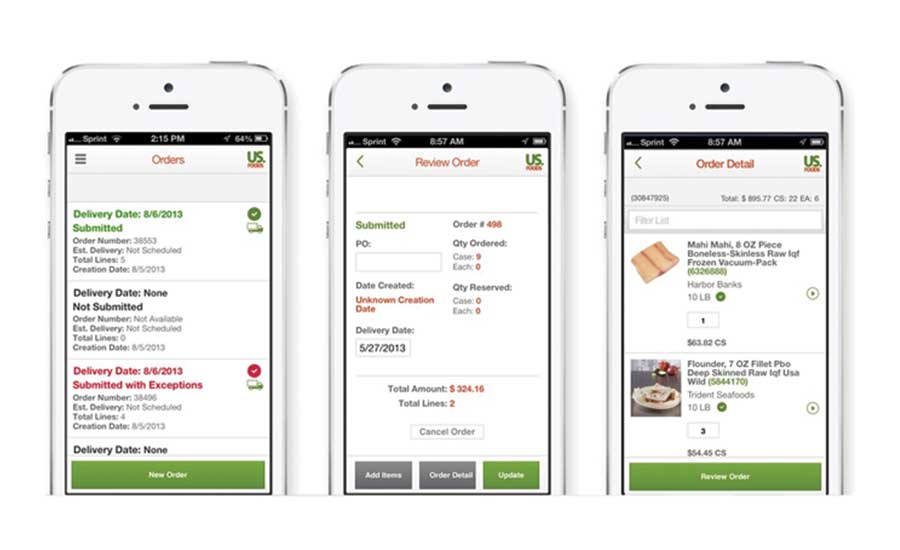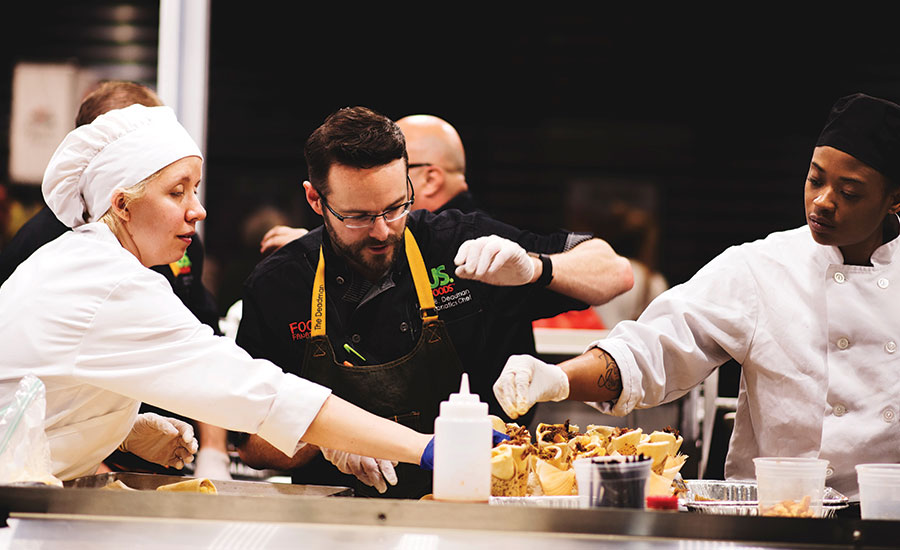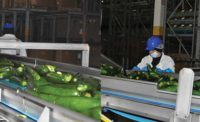For US Foods, “Great Food. Made Easy.” isn’t just a strategy—it’s the only way to do business.
“We provide our operators with unparalleled access to a wide variety of innovative products and services to help our partners set themselves apart from the competition and keep their operations efficient, profitable and easier to manage,” says Andrew Iacobucci, chief merchandising officer of the Rosemont, Ill.-based foodservice distributor.
US Foods Holding Corp. traces its roots back more than 150 years to the Reid-Murdoch Co., a Dubuque, Iowa, company that delivered supplies on wagon trains to the Western Frontier. The company operated under the name U.S. Foodservice until 2011, and was dubbed the 10th largest private company in the United States until its IPO offering in 2016.
Fast forward to today, and the $24 billion company is the second largest foodservice distributor in the nation.
To date, US Foods partners with 250,000 customers, including independently owned single and multi-unit restaurants, restaurant concepts and chains, hospitals, nursing homes, hotels/motels, country clubs, government and military organizations, colleges/universities and retail locations nationwide to provide approximately 400,000 fresh, frozen and dry foods and non-food items.
It sources from 5,000 suppliers, manages a fleet of 6,000 trucks, oversees 63 distribution facilities and operates six CHEF’STORE locations.
Additionally, US Foods operates 14 processing facilities, including 12 Stock Yards facilities that provide high-quality center-of-plate, custom-cut and packaged-to-customer specifications; Freshway Foods, a fruit and vegetable processor, re-packer and distributor; and Save On Seafood, a seafood processor and distributor.
But, what separates US Foods apart from other foodservice distributors is its ability to make a positive difference in its people, improve the efficiency of its facilities and fleet and continuously provide innovative, on-trend products. Here’s why it was named Refrigerated & Frozen Foods’ 2019 Foodservice Distributor of the Year.

In August, US Foods launched US Foods Direct, an exclusive e-commerce platform that gives operators easier access to hard-to-find ingredients, such as specialty spices, seasonings, herbs, pastas, flours, sauces or oils, and on-trend items such as plant-based proteins, dairy-free or vegan alternatives and gluten-free products.
Disruption in the marketplace
Technology solutions that help operators with their day-to-day operational needs continue to play a key role in the future of foodservice distribution, says Iacobucci.
“Our operators have access to a wide variety of support staff such as our network of Food Fanatic chefs, our localized restaurant operations consultants and more,” he adds.
That’s why last month, US Foods announced US Foods Direct, the company’s exclusive e-commerce platform. Integrated into the company’s online ordering platform, US Foods Direct gives operators easier access to hard-to-find ingredients, such as specialty spices, seasonings, herbs, pastas, flours, sauces or oils, and on-trend items such as plant-based proteins, dairy-free or vegan alternatives and gluten-free products.
“It’s truly a one-stop shop for distinctive ingredients that will set our operators’ menu apart from the competition and help them save time and resources,” says Iacobucci.

US Foods hosts Food Fanatics Live events in 10-plus U.S. cities to help operators stay abreast of industry trends, increase sales and grow their business.
US Foods’ new CHECK Business Tools program helps operators make sense of all of the technology solutions to help drive traffic, simplify staffing and reduce waste.
And, US Foods Mobile allows operators to check, edit, create new orders and track deliveries on their mobile or tablet device.
“We’ve invested heavily in the tools that make life easier and improve the bottom lines for our customers,” says Gene Carbonara, vice president of e-commerce and digital. “US Foods has built an e-commerce channel where three-quarters of our 250,000 customers order products online from our catalog of 350,000 products. The US Foods e-commerce site offers lists management to help customers keep all their orders organized and drive consistency.”
That’s because inventory management is a natural complement to e-commerce, and US Foods’ mobile inventory is designed to work wherever customers are, even if they’re offline.
“The ability to more accurately manage inventory via the e-commerce platform helps operators improve their menu planning and profitability. Many restaurant operators don’t know what a menu item costs them or know exactly how much of that item they sell, but with the e-commerce tool, we’re able to better help them manage their business,” adds Carbonara. “We are using data and analytics to merchandise and prevent order entry errors, and we use analytics to remind customers the products they frequently purchase that were left off their order. We also check order history and look for unusual order quantities. This is a second line of defense vs. the seller having to review all orders.”

In May, hundreds of US Foods’ employees participated in “Spring into Service,” a week-long effort where they packed more than 90,000 meals and snacks to various organizations fighting hunger.
Food first
In 2016, US Foods introduced the Serve Good program, a line of 25 products, including certified-organic eggs, sustainably sourced seafood and more to help chefs and foodservice operators meet growing diner demand for more sustainable ingredients. Today, the portfolio includes more than 350 sustainable food and non-food items with another 500 seafood products currently undergoing the company’s Progress Check program, which recognizes seafood products that are on the way to meeting US Foods’ Serve Good program sustainability standards.
“Our Serve Good product portfolio features products that are responsibly sourced or contribute to waste reduction. It includes sustainable seafood, responsible disposables, products that support responsible agricultural practices, responsibly sourced proteins and products that contribute to waste reduction based on how they are sourced and/or manufactured,” says Stacey Kinkaid, vice president product development and innovation.
US Foods develops nearly 20-30 on-trend products 2-3 times a year as featured in the company’s Scoop launch.
“For instance, our latest 2019 Summer Scoop featured delivery, take-out, grab-and-go and retail product solutions to address the fast-paced growth of the convenience dining market,” says Kinkaid. “Many of the products highlighted in this Scoop launch are also part of our Serve Good sustainable product portfolio. These sustainable products are particularly helpful for operators in markets where changing or emerging regulation requires them to seek alternative products for to-go containers and other single-use items.”
Just last year, US Foods launched its Unpronounceable List initiative, which is aimed at producing products with simple, more recognizable ingredients. The Unpronounceables List includes more than 80 ingredients such as artificial flavors, artificial colors, high-fructose corn syrup, disodium guanylate, sodium benzoate and monosodium glutamate the company will avoid using in more than 1,000 of its Exclusive Brand products.
“The Unpronounceables List initiative truly aligns with our desire to make it easier for our operators to align with the demand for simple, ‘back to the basics’ ingredients,” says Kinkaid.
Energy efficient fleet and facilities
As part of the company’s commitment to corporate social responsibility, US Foods is continually improving the efficiency of its new and existing facilities and fleet.
“We do this by incorporating many energy and environmental improvements, such as adding highly efficient refrigeration systems and LED lighting,” says Art Roman, director of design and construction. “We also strive to use locally sourced and recycled content furnishings and building materials when we are building a new facility from the ground up. Our distribution centers require energy to store, refrigerate and manage our vast portfolio of products. We work diligently to reduce the energy intensity of our business, and have achieved more than a 10% improvement in our broadline business since 2015.”

US Foods released its 2019 Summer Scoop, which features delivery, take-out, grab-and-go and retail product solutions.
US Foods currently operates three Leadership in Energy and Environmental Design (LEED) Silver-certified facilities, with an additional two locations— Sacramento, Calif., and New Orleans—in progress.
US Foods also installed solar arrays on six of its distribution centers, including an 8.4-megawatt solar installation in Perth Amboy, N.J., what is said to be the largest solar array in the state. In doing so, US Foods generates 13 million-plus kilowatt hours (kWh) of electricity annually.
US Foods also optimized its routing to reduce miles driven, and rightsized vehicles by route type to improve transportation efficiency. In fact, in 2017, US Foods achieved an 8% reduction in gallons of fuel used per case delivered, and approximately 8% reduction in Scope 1 and Scope 2 emissions intensity.
“Delivering products by truck is core to our business,” says Dario Skocir, senior vice president field operations.
Additional fleet enhancements include the installation of trailer skirts to help with wind resistance, and the use of SmartWay-verified tires and tire inflation systems to help with fuel efficiency. Extended oil drain schedules reduce oil use and create less oil waste, and the utilization of lighter-weight oil in vehicles helps improve fuel economy.
Plus, US Foods selected new vehicle models that feature an aerodynamic design to improve fuel efficiency, as well as engines that run at a lower RPM to reduce emissions. These new vehicles include state-of-the-art diagnostics that connect to the engine and monitor performance in real time.
Furthermore, US Foods implemented 55 compressed natural gas (CNG) vehicles to reduce truck emissions.
“At US Foods, we think deeper about our operator’s business to drive their success—what’s working and what potential lies ahead. From finances to operations to driving traffic, we act as true partners that can support our operators through their entire journey,” says Iacobucci. “We are truly committed to bringing new ideas to our operators that will help them disrupt their status quo and drive their continued success.”







